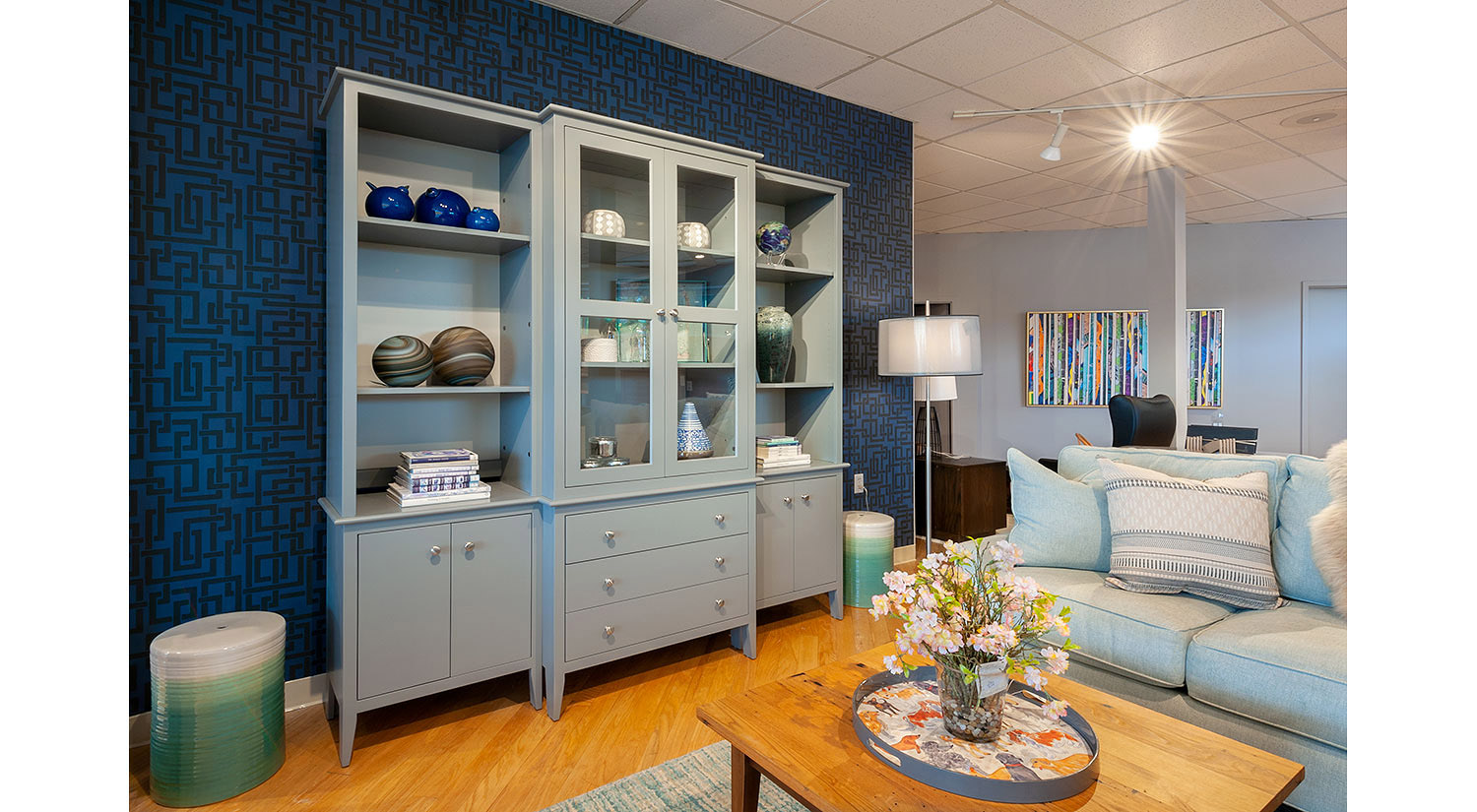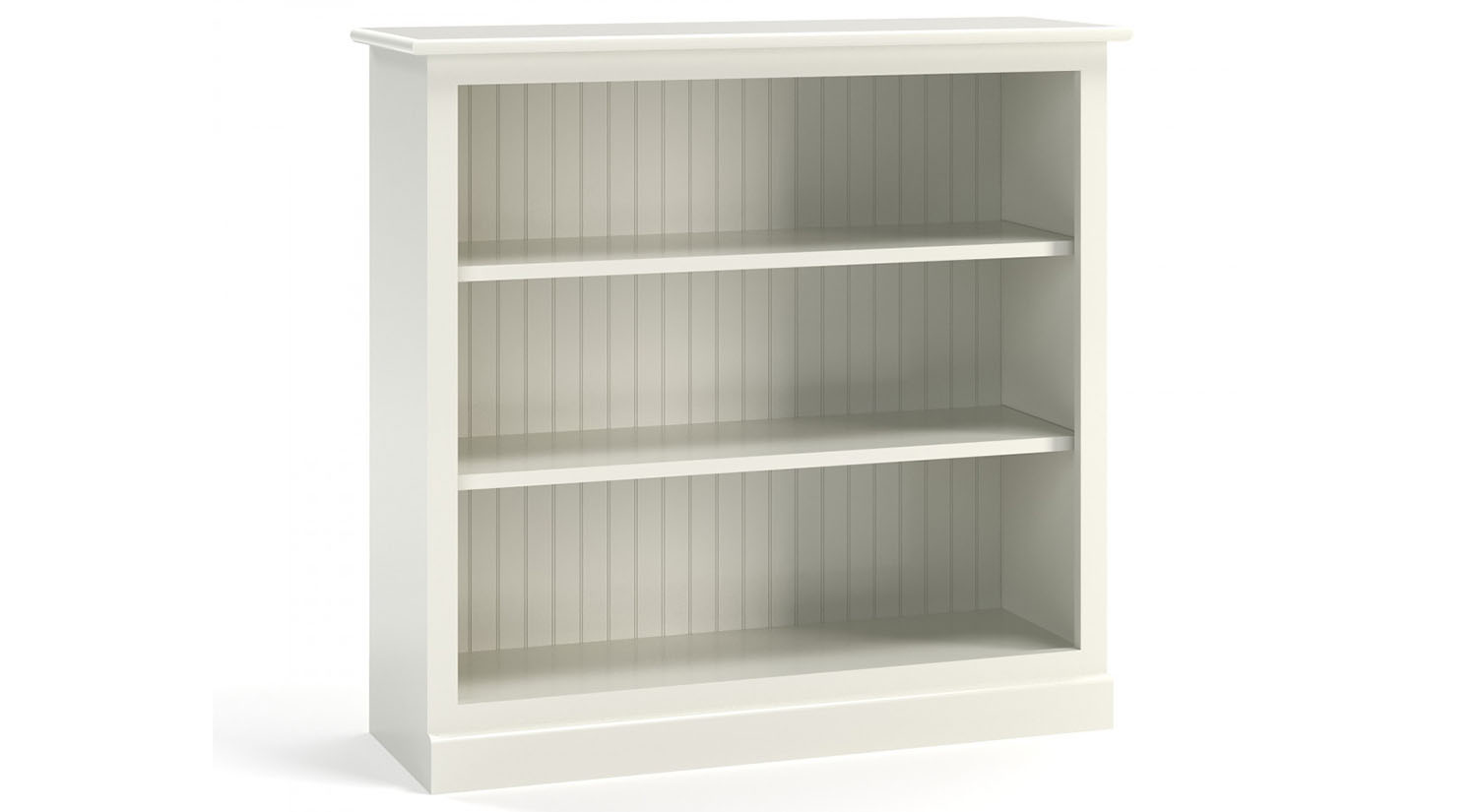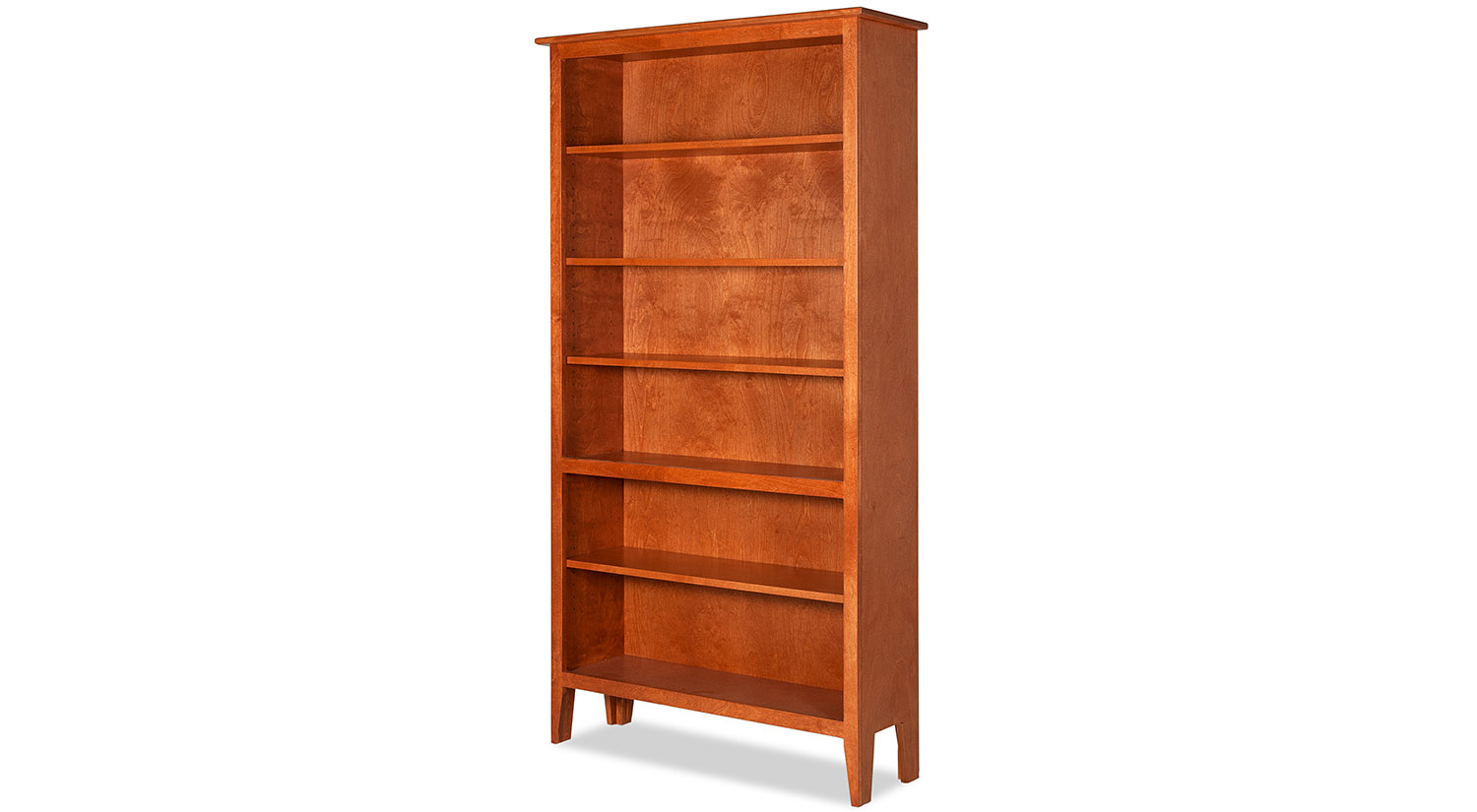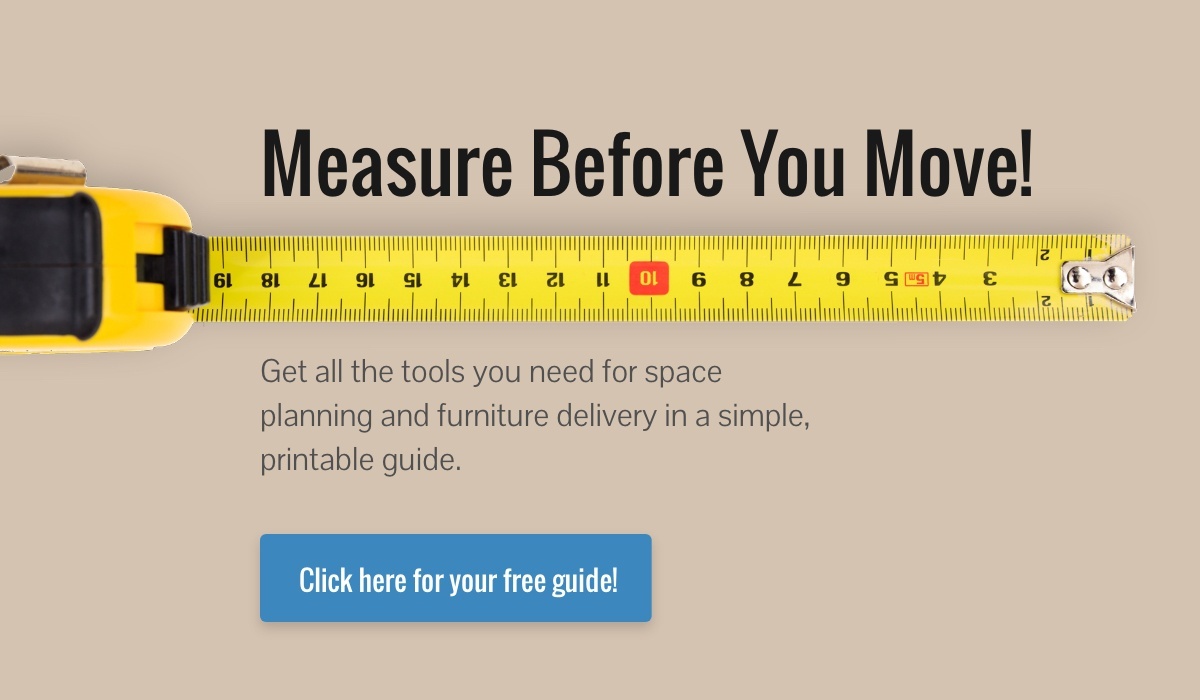Blog
Custom Bookcases: Pros, Cons, and Cost
A bookcase is a necessary addition to a home – whether you’re book-obsessed with a full library or you need a space to store your cookbooks and board games.
Buying a standard bookcase – while great in some situations – won’t always suit your needs. A custom bookcase is a perfect option when you don’t want to invest in built-in cabinets, but you need shelving that’s tailored to your home.
We met up with Renee, our Store Manager in Acton, to learn everything you should know before buying a custom bookcase.
What is a custom bookcase?

A custom bookcase is exactly what it sounds like – shelving that can be tailored down to the inch. From 24” height to 84”, several depth choices, and numerous style options, the possibilities are endless.
Our custom bookcases allow you to create a bookcase that fits your home, both in terms of style and in terms of size. Renee says, “In New England, with eaves and unique room measurements, a custom bookcase is an amazing option to get a bookcase that fits your home without having to pay for built-in shelving.”
“It’s the little details that matter in shelving. We find a lot of people increase the depth because standard bookcases don’t fit larger books or decorative items you might want to display.”
Cost
When you’re talking about cost with a custom bookcase, it’s important to remember that the price is dependent on how many changes and customizations you make. But, in general, a custom bookcase is much more affordable than built-in shelving, which can cost around $2,500.
For a standard bookcase, 36” by 72”, our custom bookcases start at $839. If you opt for a larger bookcase you’ll pay around $1,300.
Renee describes, “They start at a very nice price point, and you’re able to perfectly customize a bookcase without having to invest in built-ins. It looks like a built-in, but it’s less costly.”
Pros

The biggest benefit of custom bookcases is the fact that you have endless possibilities. Renee calls it a “bookcase-a-la-carte.”
“You can match the cabinetry in your kitchen, or do two wall units that are flush to each other. In a lot of ways, it’s easier than a bookcase you buy at Ikea, because you know exactly what you’re getting. And you don’t have to assemble it yourself.”
Another pro is that you can take them with you when you leave, as opposed to built-in shelving.
Read More:How to Design the Perfect Home Office: A Comprehensive Breakdown
Cons
The con of custom bookcases is not necessarily a con of the bookcase but rather of human error. Renee explains, “If the space isn’t measured properly or if you don’t get the size you want, that’s when you can be disappointed.”
“This is especially important when it’s a library or a whole wall unit. You need to think about not only the room it’s going in but also how it’s getting into your home. Sometimes people want floor-to-ceiling bookcases, but then they’re on the second floor with a spiral staircase.”
When you measure your home for a custom bookcase, make sure you’re checking width, depth, and height. There are also options to do a cabinet below with a hutch on top, which is easier to move because it’s two separate pieces.
Another detail to be aware of is that the overall depth of the bookcase is going to be two or so inches more than the shelf itself – which is why it’s common to extend the depth to 16” or more.

Final thoughts
Custom designing a bookcase for you is a great option for everyone – whether you have a small space and specific measurements or a larger wall-unit that you want to style to fit your home.
Just make sure you thoroughly measure the space, consider how it’s coming in, and work with a designer so they can help you create the perfect bookcase.
Want to learn more about custom bookcases and see if they’re the right fit for you? Chat with one of our knowledgeable Design Consultants who can help you with the process.
Author:


